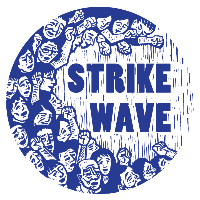OSHA complaints show workplace safety is still a concern as the economy reopens
by Kevin Reuning
Credit: Anthony Quintano, Flickr
We are more than six months into a pandemic that has left more than 850,000 dead worldwide and more than 180,000 dead in the United States. Although some states and localities worked quickly to slow the spread and help workers, the abdication of responsibility by the White House and the refusal of Republicans in Congress to negotiate further federal relief has left millions in precarious positions while the virus continues to spread.
Throughout the pandemic, OSHA has steadily provided information on complaints filed from workers facing unsafe conditions due to COVID-19. Although imperfect, this information provides a view into the situations faced by workers. As of August 30, the United States broke 20,000 closed OSHA complaints with another 10,000 open.
The information has some limitations. OSHA only provides information on where the complaint originated from after a case is closed. OSHA typically exercises jurisdiction over private sector employers, leaving the public sector (such as public education) out of the picture. Importantly, these are complaints primarily made by employees. Not all employees are aware of their rights at work, know how to make complaints, or feel empowered to make them. Finally, complaints do not necessarily lead to enforcement; OSHA has been widely criticized for failing to issue citations and enforce workplace health and safety standards during the pandemic.
But the complaints are still revealing. One clear trend is a change in the type of complaints filed over time. The first plot below shows the daily number of complaints in some of the more prominent sectors of the economy. Changes reflect trends in how COVID-19 has impacted workplace health and safety and the economy; complaints to OSHA peaked early on in many sectors, such as healthcare and manufacturing. At the end of March the healthcare sector saw multiple days with over 100 complaints, hitting a peak of 140 on March 30th. Manufacturing peaked earlier—and higher—with 169 complaints on March 26th.
In contrast, other sectors saw multiple peaks. Retail trade hit its first peak with 96 complaints on March 26, but doubled that the Monday after the July 4th weekend with 183 complaints. Transportation and warehousing saw its own smaller version of this double peak as well. The growing number of cases in the food service sector is of concern; reported cases also peaked the Monday after the 4th of July weekend.
Along with identifying how cases have changed over time, data reveals what employers face difficulty (or lack willingness) in implementing health and safety measures. The most frequent recipient of complaints is of particular interest: the United States Postal Service. USPS employees alone have made 324 COVID related complaints, dramatically exceeding the next closest employer, the United Parcel Service. Many of the complaints describe decaying infrastructure, rat-infested sorting facilities, and other evidence of long-term neglect, in addition to concerns specifically related to COVID-19. This is particularly relevant given widespread concerns regarding postal delays and the election, and reflects long-term financial difficulties in USPS due to flawed policy and federal mismanagement.
Logistics and transportation is well represented at the top of the list; UPS (185 complaints) is ranked second and FedEx (103) is ranked sixth. All of these employers have hundreds of thousands of essential employees scattered across the country. USPS and UPS also have strong employee unions; workers are likely better educated regarding their rights, and union representatives are more likely to utilize OSHA to report problems.
Unsurprisingly, retailers that have their own manufacturing and logistics network to handle are well-represented as well. Walmart (153), Lowe’s (144), and Amazon (140) have all experienced numerous OSHA complaints throughout the pandemic. It is also worth noting that none of the three have unionized workforces; Walmart, Lowe’s, and Amazon are all well-known for strong opposition to employee organization. Amazon has dramatically increased its operations over the course of the pandemic as consumers turn from brick-and-mortar retail to online shopping, accelerating a pre-existing trend in the retail market.
A number of conclusions can be reached: OSHA complaints during the pandemic are a function of employer policy, worker organization/understanding of their rights, the role that sector plays in overall economic activity right now, the feasibility of adequate health and safety policies, and employer willingness to implement them. These are complicated times, and there are few simple stories. Perhaps the most glaring data point from all this is how major companies with large logistics networks have still not implemented policies to protect their essential but often overlooked workers.
We can also directly see how shifts in government response changed where complaints came from. Closures of non-essential business protected workers early on, but as these policies were rescinded or weakened complaints from the non-essential service economy increased. The reopenings have put some of the most precarious workers (such as in the hospitality sector) at risk, buying “normalcy” and economic activity at workers’ expense.
OSHA complaints are a window into the reality faced by American workers during a global pandemic—and the picture they show is grim. Personal protective equipment is still in short supply, social distancing and hygienic practices are still lacking, and employers are free to act or refuse to act without fear of repercussions. The consequent health and safety violations are both a threat to worker safety, and a threat to public health; what mitigation efforts happen or do not happen at a workplace quickly impacts the broader community. Ensuring that workers are protected is a political priority for the sake of both workers and their communities.
Kevin Reuning (@KevinReuning) is an assistant professor of political science at Miami University.



